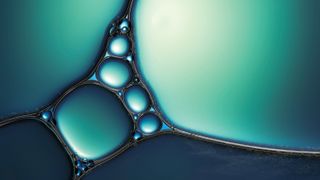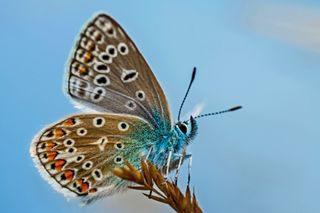Best macro lens: close-up lenses for Canon and Nikon DSLRs
Want to shoot close-ups? We pick the best lenses for the job

If you want to shoot ultra-close-up images, you need a macro lens.
There are various ways to shoot extreme close-ups, including the use of hollow extension tubes, reversing rings or close-up ‘filters’ that screw into to the accessory attachment thread of regular lenses. However, the main advantage of any ‘system’ camera like a DSLR or mirrorless camera is that you can fit the right lens for the shooting scenario. And when it comes to getting in close, there’s no beating a proper macro lens.
You’ll often see telephoto zoom lenses with the word ‘macro’ somewhere in their title, but they typically give a maximum magnification factor of merely 0.3x to 0.5x. By comparison, most (but not all) macro prime lenses deliver a full 1.0x or 1:1 magnification ratio. But what does that actually mean?
Magnification
Why you can trust TechRadar
Basically, at 1.0x magnification, an object will be reproduced on a camera’s image sensor at full life size. So, for example, something the size of a postage stamp will pretty much fill the whole image frame. This translates into enormous magnification when you view the resulting image on-screen or in print. Indeed, zoom into pixel level with the image on a computer screen and you can see levels of detail that are invisible to the naked eye.
Some macro lenses are designed exclusively for APS-C format DSLRs. Just like full-frame compatible lenses, they give a maximum of 1.0x magnification. However, due to the 1.5x crop factor of Nikon DX format cameras such as the D5600 (1.6x for Canon APS-C like the EOS Rebel T7i / EOS 800D), these DSLRs give an even greater ‘effective’ magnification effect, regardless of whether you fit them with an APS-C format or full-frame compatible lens.
There are actually advantages in using a full-frame compatible macro lens on an APS-C class body. The typically longer focal length gives a longer minimum focus distance, at which maximum magnification is achieved. This gives you a more comfortable working distance, so the front end of the lens doesn’t come overly close to the subject. It’s therefore easier to photograph bugs and other tiny wildlife without scaring them away before you’ve got your shot. It also reduces the risk of your lens casting a shadow over what you’re shooting, if you’re relying on ambient lighting rather than using flash.
Image quality

One problem in macro photography is that depth of field can be tiny. Indeed, at a macro lens’s minimum focus distance, to enable the greatest magnification, depth of field can shrink to just a couple of millimetres. An important factor in performance is therefore how well the lens retains good image quality at very narrow apertures of around f/16 or f/22, where you’ll gain precious extra millimetres in depth of field. Accurate autofocus can also be a big advantage but, in practical terms, it’s usually better to focus manually on the exact part of an object that you want to be rendered most sharply. The magnified Live View option in recent Canon and Nikon cameras is very helpful for this, enabling manual focusing with much greater precision than using the viewfinder.
Get daily insight, inspiration and deals in your inbox
Get the hottest deals available in your inbox plus news, reviews, opinion, analysis and more from the TechRadar team.
